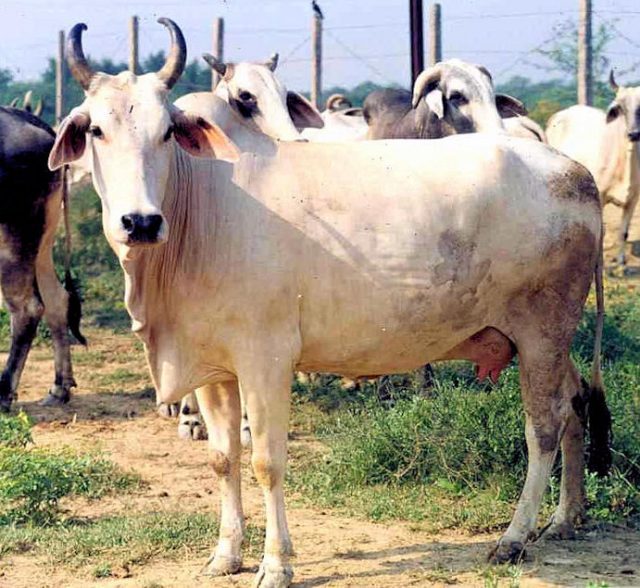Type the name of the breed you're looking for below
[wpdreams_ajaxsearchlite] Don't see the breed your're looking for? Click here and let us know!
Mewati cattle
| Place of Origin | India |
| Origin | Mewati cattle are found in the tract known as Mewat, but the breed is sometimes called Kosi, due to the large numbers of cattle of this breed sold from the market at Kosi, a small town in the district of Mathura. Mewati cattle are similar in type to Hariana, but show definite evidence of Gir blood. Native habitants of Rath and Nagori cattle being adjacent to Mewat, these two breeds may also have contributed to the formation of the Mewati. They are named after Mewat in Haryana state. They are known to be related to Gyr and Haryanvi cattle breeds. |
| Purpose | It is considered to be a dual purpose breed with good milking and draft (work) prowess. The bulls are known for their strength and endurance, and are employed for agricultural and carting purposes. |
| Appearance | Mewati cattle are usually white in colour with neck, shoulders and quarters of a darker shade. Occasionally, individual beasts have Gir coloration. The face is long and narrow with the forehead slightly bulging. Eyes are prominent and surrounded by a very dark rim. The muzzle is wide and square and the upper lip thick and overhanging, giving the upper part of the nose a contracted appearance. The muzzle is pitch black in color. The ears are pendulous but not so long. The neck and the whole frame is strong but the limbs are light. The legs are relatively long and the frame of the body gives an impressions of being loosely built. The chest is deep but the ribs are flat. The head and neck show an upright carriage. The dewlap, though hanging, is not very loose. The sheath also is loose but not pendulous. The legs are fine and round with strong, somewhat large hooves, well-rounded in shape. The tail is long, the tuft nearly reaching the heels. Cows usually have well-developed udders. |
| Horns | Horns emerge from the outer angles of the poll and are inclined to turn backwards at the points. |



